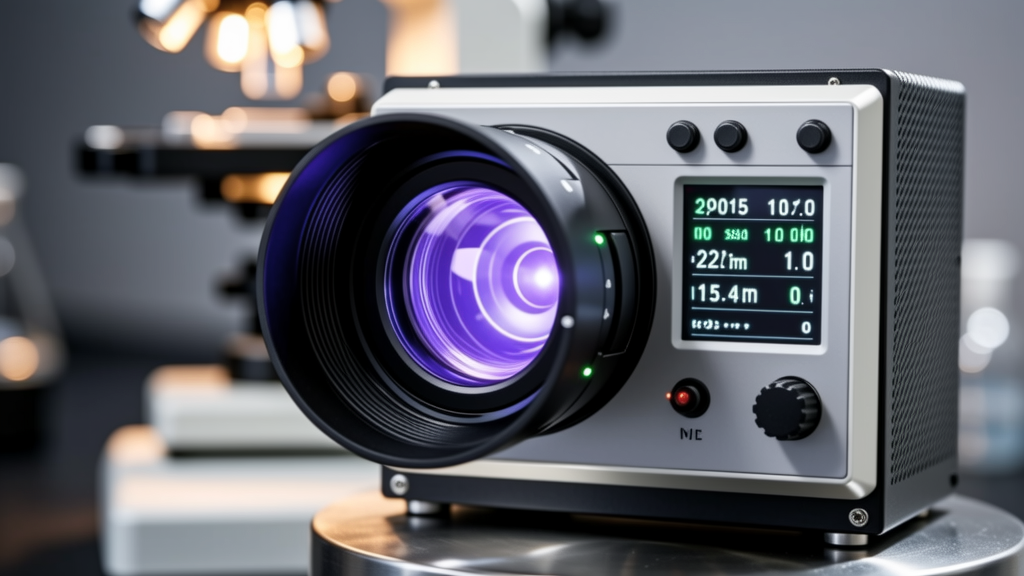The intensity of ultraviolet radiation is an important indicator for measuring the energy of ultraviolet radiation, and has wide applications in various fields such as medical care, environmental monitoring, and industrial production. With the development of technology, the methods for measuring ultraviolet light intensity are becoming increasingly mature, which not only improves the accuracy of measurement, but also expands its applicability
Basic concept of ultraviolet light intensity
The intensity of ultraviolet radiation usually refers to the received ultraviolet radiation power per unit area, measured in watts per square meter (W/m ²). According to different wavelengths, ultraviolet radiation can be divided into three parts: UVA, UVB, and UVC. The requirements for ultraviolet light intensity vary in different application scenarios
Measuring instrument for ultraviolet light intensity
The commonly used instruments for measuring ultraviolet light intensity currently include ultraviolet irradiance meters and ultraviolet spectrometers. Among them, the ultraviolet irradiance meter is the most common measuring tool, which can directly read the intensity values of ultraviolet light within a specific wavelength range

A UV irradiance meter generally consists of a sensor and a display unit. The sensor is responsible for receiving UV light signals and converting them into electrical signals, which are then processed and displayed numerically by the display unit. This device is easy to operate and suitable for rapid on-site measurement
The measurement principle of ultraviolet light intensity
The measurement of ultraviolet light intensity is based on the principle of photoelectric effect. When ultraviolet light is irradiated onto the surface of the sensor, it will excite electrons to generate a current, and the magnitude of the current is proportional to the intensity of the ultraviolet light. Therefore, by measuring the change in current, the numerical value of ultraviolet light intensity can be indirectly obtained
In order to improve the accuracy of measurement, some high-end ultraviolet irradiance meters are also equipped with temperature compensation function to eliminate the influence of environmental temperature changes on measurement results
Calibration and standardization of ultraviolet light intensity
Due to the direct impact of the measurement results of ultraviolet light intensity on the quality of experiments or products, it is necessary to calibrate the measuring instruments regularly. Calibration usually uses standard light sources to ensure the accuracy and consistency of measurement data
The internationally widely adopted standards such as ISO 2173:2014 specify the performance requirements and calibration methods for ultraviolet irradiance meters, providing a unified basis for measuring ultraviolet irradiance intensity worldwide
Application scenarios of ultraviolet light intensity
The determination of ultraviolet light intensity is widely used in multiple fields. For example, in the medical industry, ultraviolet lamps are used for disinfection and treatment, and precise control of light intensity is required to ensure safety and effectiveness; In environmental monitoring, measuring the intensity of ultraviolet light can help evaluate the impact of solar radiation on ecosystems; In industrial production, UV curing technology relies on precise control of light intensity to ensure product quality

In addition, the measurement of ultraviolet light intensity also plays an important role in scientific research experiments. Researchers measure the intensity of ultraviolet light under different conditions and analyze its effects on materials, organisms, etc., in order to promote technological progress in related fields
Future Development Trends
With the improvement of sensor technology and data analysis capabilities, the methods for measuring ultraviolet light intensity are developing towards intelligence and automation. The new ultraviolet irradiance meter not only has higher accuracy, but also enables remote monitoring and data storage, making it easy to track and analyze for a long time
Meanwhile, the application of artificial intelligence and big data technology has also brought new possibilities for measuring ultraviolet light intensity. By analyzing a large amount of historical data, the trend of changes in ultraviolet light intensity can be predicted, providing scientific support for relevant decisions
conclusion
The determination of ultraviolet light intensity is an important technical task that involves knowledge from multiple disciplines. With the advancement of technology, measurement methods are constantly optimized and their application scope is expanding. Accurate measurement of ultraviolet light intensity is indispensable in both scientific research and practical applications